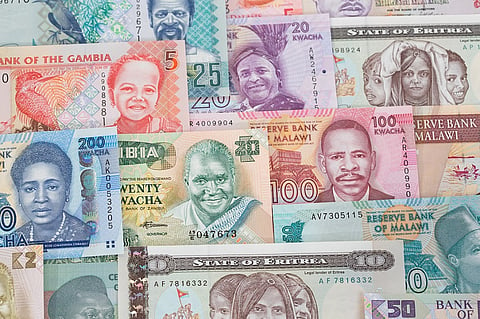

More than half of African nations are spending heavily on paying interests to their creditors, limiting investments on healthcare, according to a new policy brief.
African countries allocated over 2.3 per cent of their gross domestic product (GDP) to interest debt repayments between 2020 and 2022, compared to 1.8 per cent of GDP spent on healthcare.
Countries like Mozambique and Angola saw their total debt servicing costs (includes principal repayments and interest) exceeding 20 per cent of GDP between 2020 and 2022, reads the policy brief by the Debt Relief for a Green and Inclusive Recovery (DRGR) Project, a collaboration between the Boston University Global Development Policy Center, Heinrich-Böll-Stiftung and the Centre for Sustainable Finance at SOAS, University of London.
Africa has received more loans than grant-based funding at a rate of two to one, forcing nations into a debt trap. This means investments in education, healthcare, and social protection, which are important for productivity and growth, take a backseat.
Further, data from World Bank shows that debt owed by the continent to private bondholders rose to $187 billion in 2022 from $25 billion in 2008. Historically, low-income countries borrowed mostly from multilateral development banks (MDBs), which are institutions like the World Bank that provide financial assistance to developing countries to promote economic and social development or bilateral donors within the Paris Club, a cartel of 22 creditor governments. In recent years, more low-income countries have turned to private capital markets, which provide expensive loans with much higher interest rates.
Further, the combined impacts of climate change, energy and food price spikes, and the hiking of interest rates by central banks in advanced countries has increased debt owed by African nations to foreign creditors by 240 per cent between 2008-2022.
Senegal, Rwanda, Mozambique, and Ethiopia have recorded a tenfold increase in external debt.
The brief cited the African Development Bank 2024 estimates, which found that African governments could spend $163 billion on repaying debt, up from $61 billion in 2010.
Patrick Njoroge, former Governor of the Central Bank of Kenya, DRGR Project Co-Chair, calls the current situation the worst crisis in 80 years.
“External public debt service ratios have reached record levels, and a growing number of countries risk defaulting not only on debt, but also on their development and climate goals. A comprehensive debt relief response that bolsters growth and safeguards the development and climate goals of these countries is urgently needed,” he said in a statement.
Four African nations have already defaulted on their debts since 2020. The report also noted that 34 African countries will need significant debt relief to ensure they get the necessary funding to meet the United Nations 2030 Sustainable Development Goals and Paris Agreement targets. They will also need other forms of low cost and concessional financing (below market rate finance provided by major financial institutions).
Dats shows that Africa needs about $2.8 trillion between 2020 and 2030 to meet its nationally determined contributions (NDCs) as part of its commitment to meet the Paris Agreement goals.
Of the $2.8 trillion, around 10 per cent of this funding ($264 billion) is expected to come from domestic public resources while the remaining 90 per cent could be sourced from international sources and private sector investments.
Further, Africa needs $3 trillion additional flows by 2030 to meet its overall climate and development finance needs. Of this, $1 trillion is expected to come from externally from private or official sources.
Without addressing the debt problem in Africa, countries will stay trapped in a vicious cycle of climate impacts, affecting development. It could further lead to chronic underinvestment and political instability, the brief highlighted.
The G20 Common Framework has also failed to help distressed nations. The framework, set up by the G20 and launched in 2020 to assist such countries, has been slow in its approach due to complex and protracted negotiations and limited participation from private creditors. Only Chad, Ethiopia, Ghana, and Zambia have applied for debt relief under this framework.
The report recommends substantial infusion of low-cost financing, comprehensive debt relief and a fundamental restructuring of the international financial architecture.